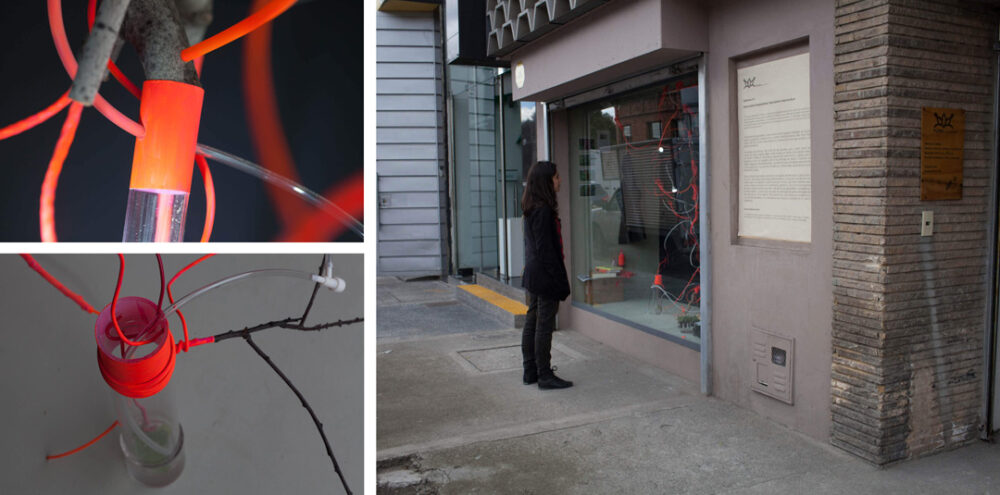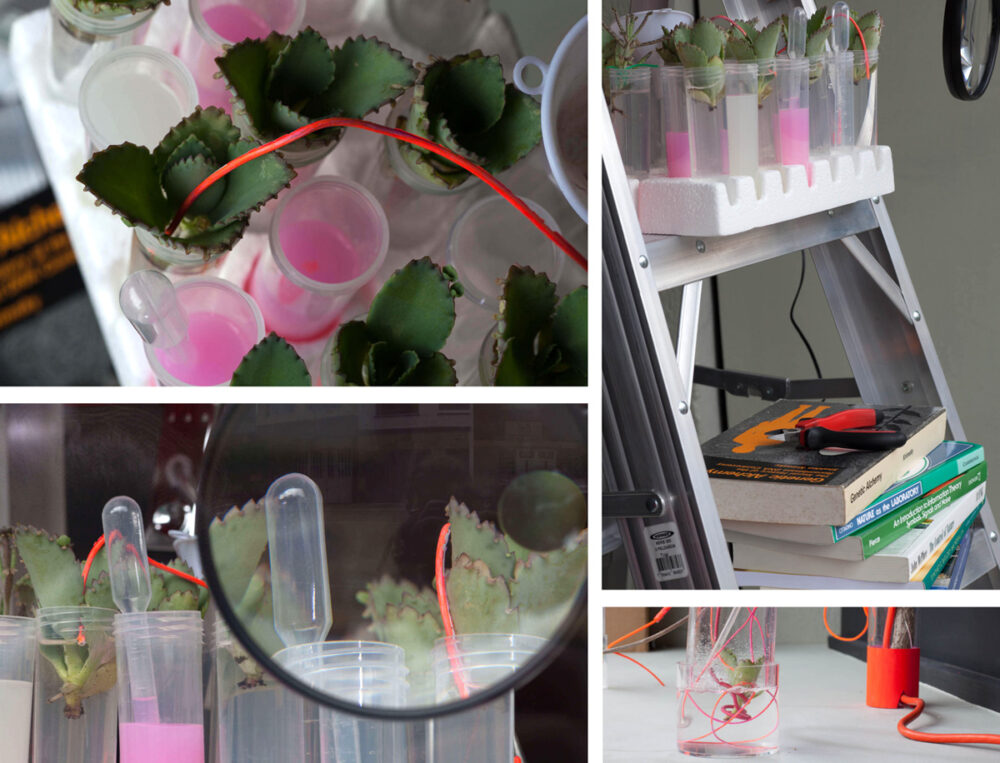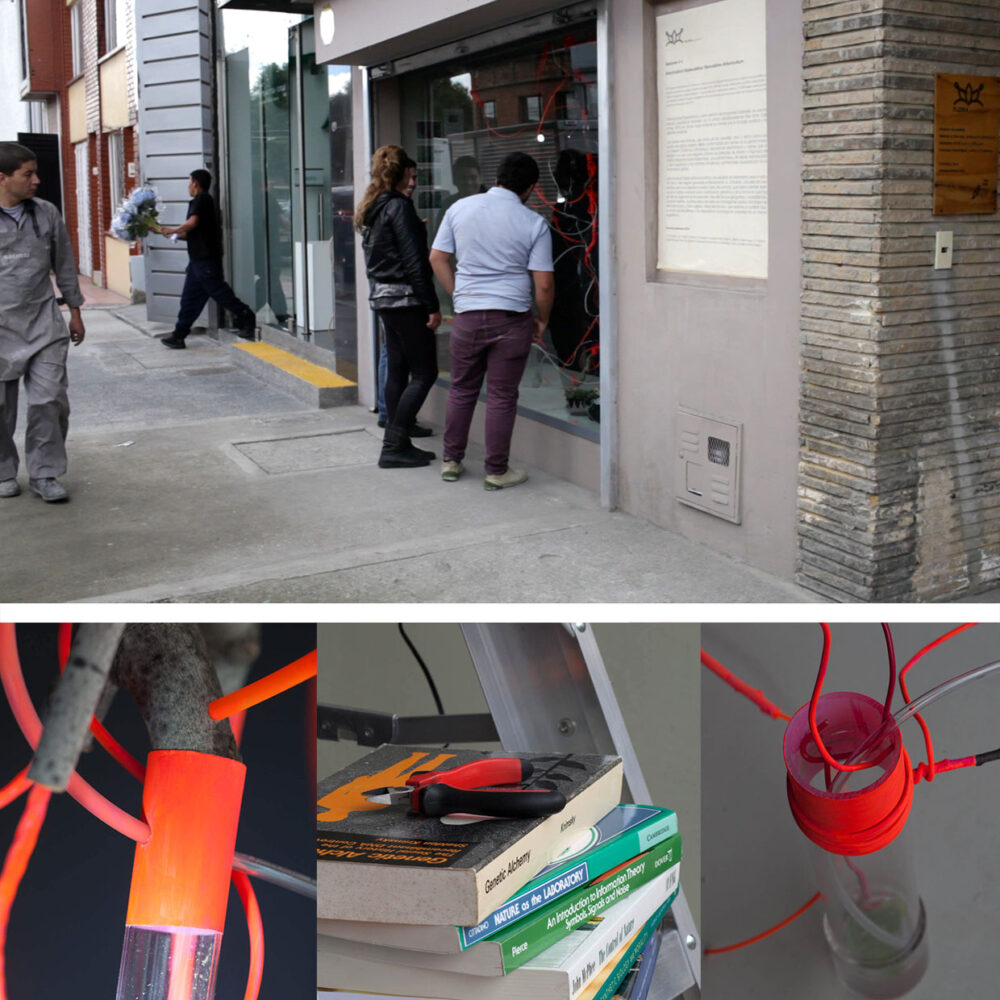Speculative Arboriculture (2012–2014) is a series of site-specific sculptures and video pieces that address issues around synthetic biology, plant intelligence and invasion ecology.
The first iteration of the series resulted in this video piece, Speculative Arboriculture (2011), 6:26″
ABOVE: “Speculative Arboriculture is a video set in a small suburban forest in Long Island. It explores a conception of ecology that encompasses human activity, erasing the artificial borders between humans and habitat. The video is based around a sculptural project that combines found natural materials (dead wood and foliage) with electrical conduit and living plants like moss and lichen. The sculpture takes the form of a networked branch that seems to be either drawing power from or conveying power to the surrounding built environment. I began filming the sculpture as I built it, combining footage shot in the studio with details from the small forest outside my studio space when I was an artist in residence at the Carriage House. The result is a piece that slowly reveals an ecosystem in which the lines between technological and biological evolution appear increasingly blurred. Oil and water are harvested from or embedded in leaves, branches, wires and moss. The minute details of this hybrid environment are accompanied by a shifting soundscape of traffic, electricity, machinery and forest life.”
The most recent version of the project was commissioned by FLORA ars+natura, a contemporary art space in Bogotá, Colombia with a focus on connections between environment and artistic practice. I created the piece for their Cabinet program, which invites artists to install in a street-facing vitrine that is visible to the general public on a daily basis.

On view from July 5th-July 26th, 2014, the piece is made from the vines of the Asiatic bittersweet plant (Celastrus orbiculatus)—a species considered invasive in the Americas—combined with salvaged branches, electronics, wires and aquarium tubing. These disparate materials are assembled into a series of interwoven plant-like forms encased in layers of acrylic paint that glow hazard-symbol orange. The sculpture also hosts a small colony of mother of millions (Kalanchoe daigremontiana) seedlings, a rapidly reproducing, toxic and very tough plant, also considered invasive in some contexts, and ideally suited for the oncoming environmental changes caused by global warming.

With branches sprouting in tangles from the walls, floor and ceiling of the space, the project references the potency of rapidly evolving genetic modification and the erratically expanding geographic and ecological ranges of plants and other organisms in our globalized era. Appearing simultaneously clinical and overrun, the space suggests two possibilities: a controlled lab setting for the study of synthetically generated plant life, and a quarantine room for an out-of-control invasive species under close observation.

Installed next door to a flower shop, the piece contrasted sharply with the voluptuous bouquets sold next door. Colombia is well known for its participation in the international cut flower market; the piece drew additional meaning from the allusion to globalization as reflected in the spread of invasive species and the distribution of plants as commodities for world wide consumption.

During the opening at FLORA I gave presentation about my artistic practice and how Speculative Arboriculture is part of that practice. I’ve written about the talk here, and below is a short video showing some selections from the talk and Q & A session that followed, hosted in the news section of the Misol Foundation‘s website: